At 16 years and 343 days old, Warren Zaïre-Emery took to the field for PSG’s long-awaited UEFA Champions League clash with Bayern Munich and in the process, became the youngest-ever player to start a Champions League tie. This was yet another record broken by the young midfielder as he had previously become Les Parisiens youngest ever starter and goalscorer.
Since coming under the ownership of the Qataris, Paris Saint-Germain has been transformed into a team packed with global superstars. The desire to fill their ranks with these big-name players has come at a cost with talents who had come through the youth system such as Kingsley Coman, Moussa Diaby and Matteo Guendouzi opting to leave the club as nailing down a place in the starting eleven seemed unattainable.
Times are changing though, the appointments of Christophe Galtier as head coach and Luis Campos as football advisor is an indication that the Paris club want to finally utilise their famed youth system. Campos in particular boasts a spectacular record when it comes to youth development. During his time at Monaco, he noticed the potential of Kylian Mbappe at an early age and created a pathway to the first team so as not to stifle his development.
Having a homegrown player such as Zaire-Emery who has been at the club since he was eight years old, breakthrough into the first team means that other youngsters may not be so keen to leave if they can see one of their peers making a name for himself. This tactical analysis, in the form of a scout report, will look at the strengths and weaknesses of Zaire-Emery’s game and how he looks to be completely unfazed stepping into the star-studded first team in Galtier’s tactics.
Player profile
Since Galtier’s appointment, PSG have primarily used a 3-4-3 or 3-4-1-2 and on occasion a 3-5-2 formation. Not only does this accommodate the vast number of superstars who demand to be in the starting eleven, but it also provides them with a great amount of fluidity which allows the midfielders to be incredibly active in the attacking phase of play — primarily deployed as a central or occasionally as defensive midfielder as his heat map demonstrates. He usually plays on the right side of the two-man midfield. To say he is only 16 years old, Zaire-Emery frequently demonstrates a confidence that is beyond his years.
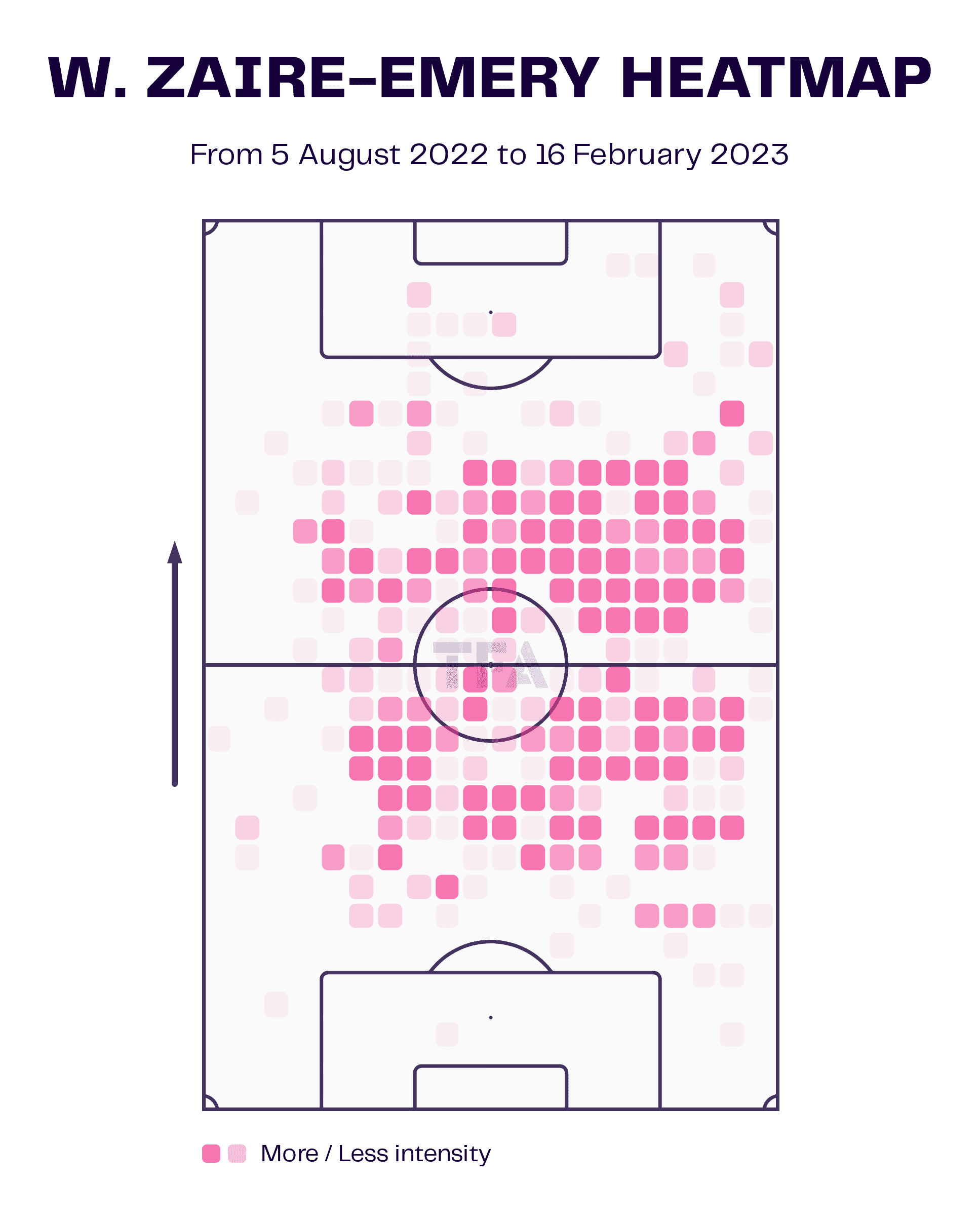
When in possession the PSG youngster showcases an enviable amount of composure. He is more than adept at carrying the ball forwards. As the image below demonstrates, he consistently makes runs into the final third, both with and without the ball which of course provides another attacking outlet for Galtier’s side.
He is more than comfortable with the ball at his feet. At 1.7 metres, he is not overly tall which affords him a lower centre of gravity, therefore it is much more difficult for an opponent to push him off the ball. The midfielder does not shy away from responsibility as he frequently takes it upon himself to progress the play. So far this season Zaire-Emery is averaging 1.25 progressive runs per 90 which indicates how effective he has been when progressing PSG further into the attacking phase of play.
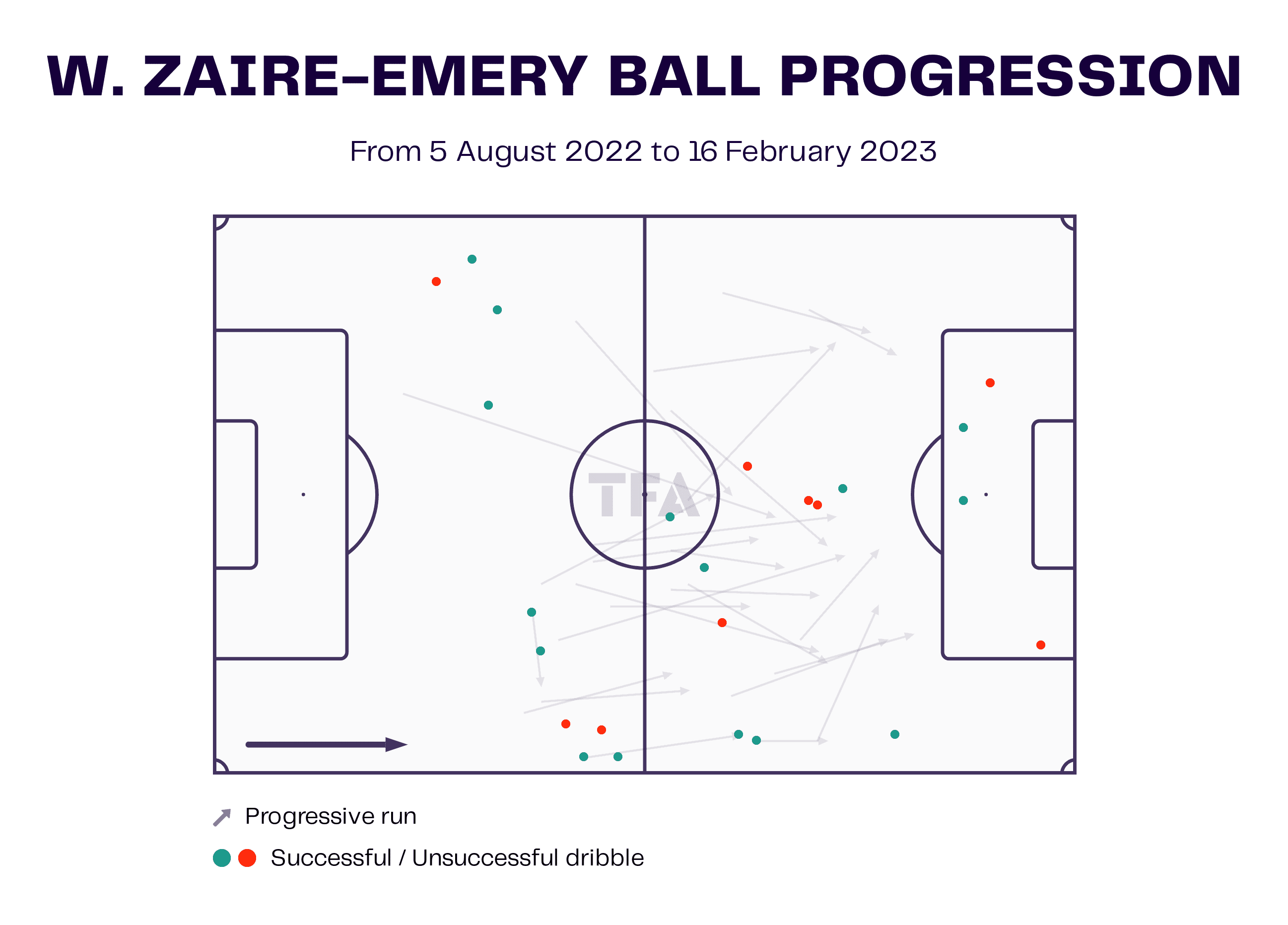
In PSG’s recent Ligue 1 clash with Monaco, Zaire-Emery was given the nod to start as the right-sided central midfielder. He was given licence to get forward much more often with Vitinha and Soler providing more defensive screening. Despite his team being on the wrong end of the result, the young midfielder was a thorn in Monaco’s side throughout the game.
The images below are a good demonstration of Zaire-Emery’s strength and composure on the ball. With PSG looking to build out from the back, the midfielder receives the ball whilst under pressure from an opponent whilst another Monaco player is looking to press him to force a turnover. Zaire-Emery is able to calmly control the ball and use subtle body movements to evade both defenders putting pressure on him. This creates enough space for him to have two options; either pass down the line to Marquinhos or laterally to Danilo.

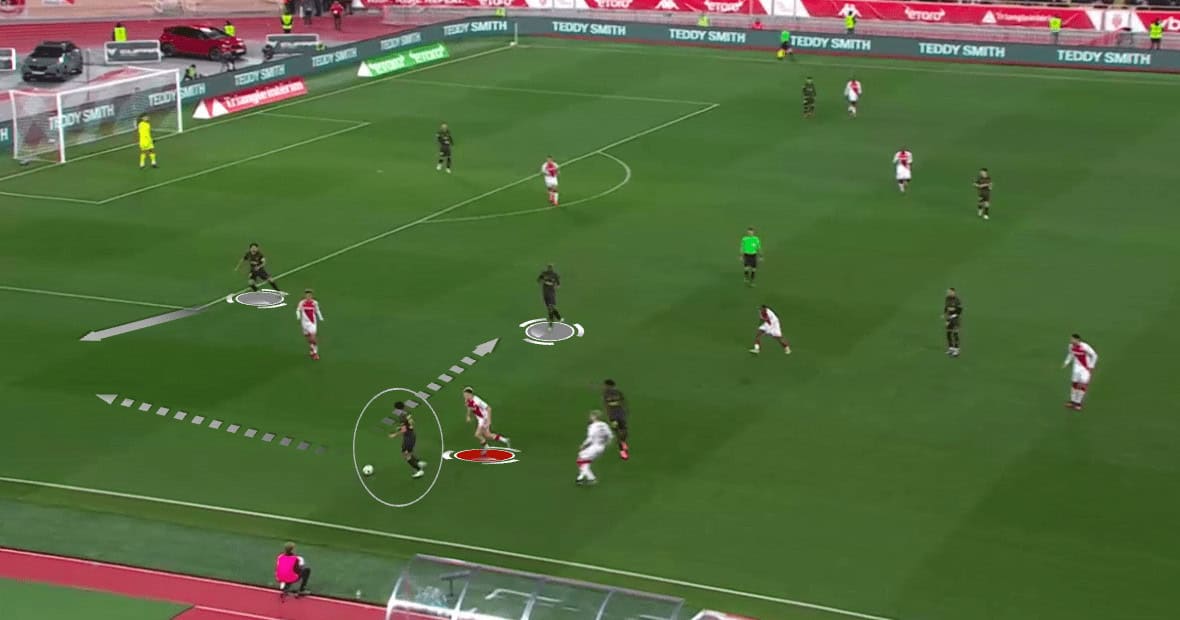
Between the lines
During the Monaco game, he frequently took up positions between the opposition’s defensive and midfield lines which made it incredibly difficult for the Monaco players to track his movements.
In the image below Zaire-Emery is highlighted, clearly in between the two lines of Monaco players. This positioning means that should he receive a pass, he will have time and space to either turn, run at the opponent or look for another viable passing option. This demonstrates a shrewd understanding of where to position himself when his team are looking to build an attack. By placing himself between the lines, it decreases the likelihood of a pass from his teammate being intercepted by the opposition. The gap between both the Monaco central midfielders could be exploited as Zaire-Emery is able to receive a pass from a teammate.
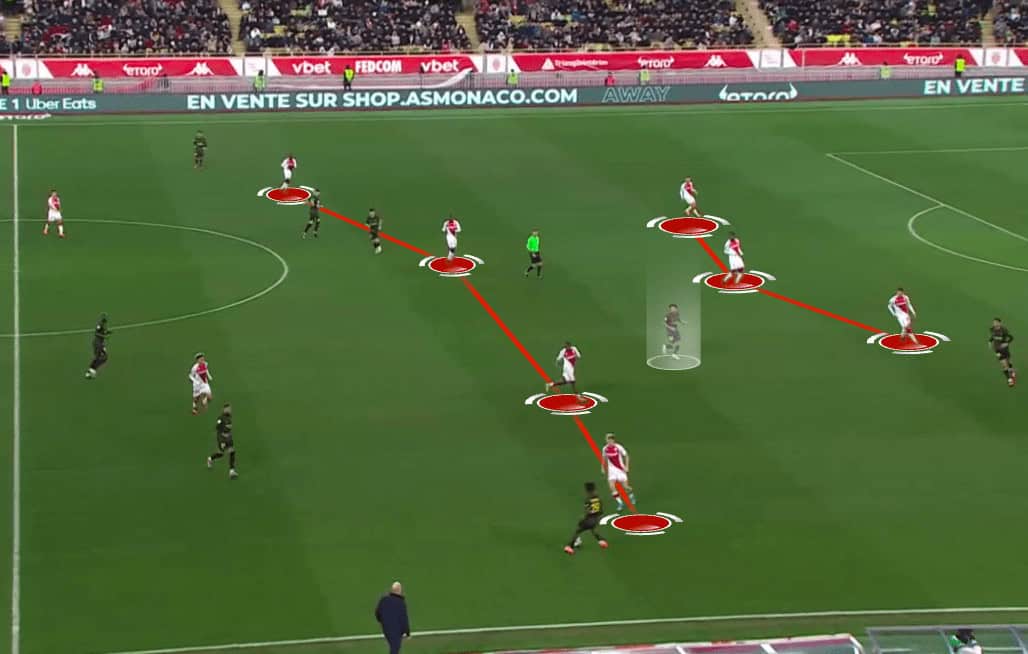
In the image below, Zaire-Emery has once again taken up a position between the Monaco defensive and midfield lines. This time, in order to ensure his teammate have a viable passing option, he makes the run to open himself up to receive a short pass. In this instance, his movement has two possible consequences, not only does it mean that he could receive the ball but also that a Monaco defender may choose to follow him, thus leaving his position in the defensive line and creating space for PSG to utilise in the attacking phase.

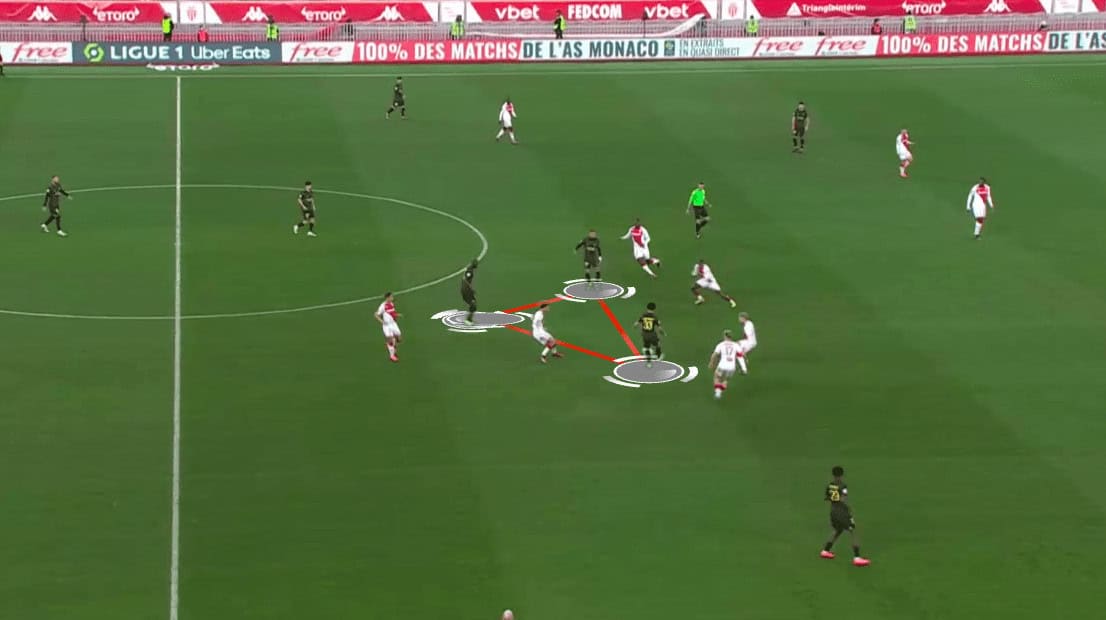
Another good example of Zaire-Emery being involved in PSG’s attempts to play through the lines can be seen above. The young midfielder and his teammates, Danilo and Soler, have positioned themselves between the Monaco forward and midfield lines. Their positioning has drawn five Monaco players around them which has generated vast amounts of space elsewhere on the pitch for PSG to use to their advantage. The small triangular positioning of the players is akin to a rondo, demonstrating that Zaire-Emery has the ability to translate training practices to in-game situations.
The 16-year-old has not only shown a great knowledge of when and where to position himself to receive the ball, but he has also proven himself to be a safe bet when making passes as he has a pass accuracy of 91% so far this season. Of course, this is offset by the fact that he is playing for PSG, who typically dominate possession and therefore the number of passes and accuracy are likely to be higher, but it still indicates that he is making the right decisions when he is distributing possession.
Of Zaire-Emery’s passes into the final third, he has a completion rate of 85.7% which is supportive of his overall pass accuracy and shows that he is able to play forward passes which progress the team further into the attacking phase.
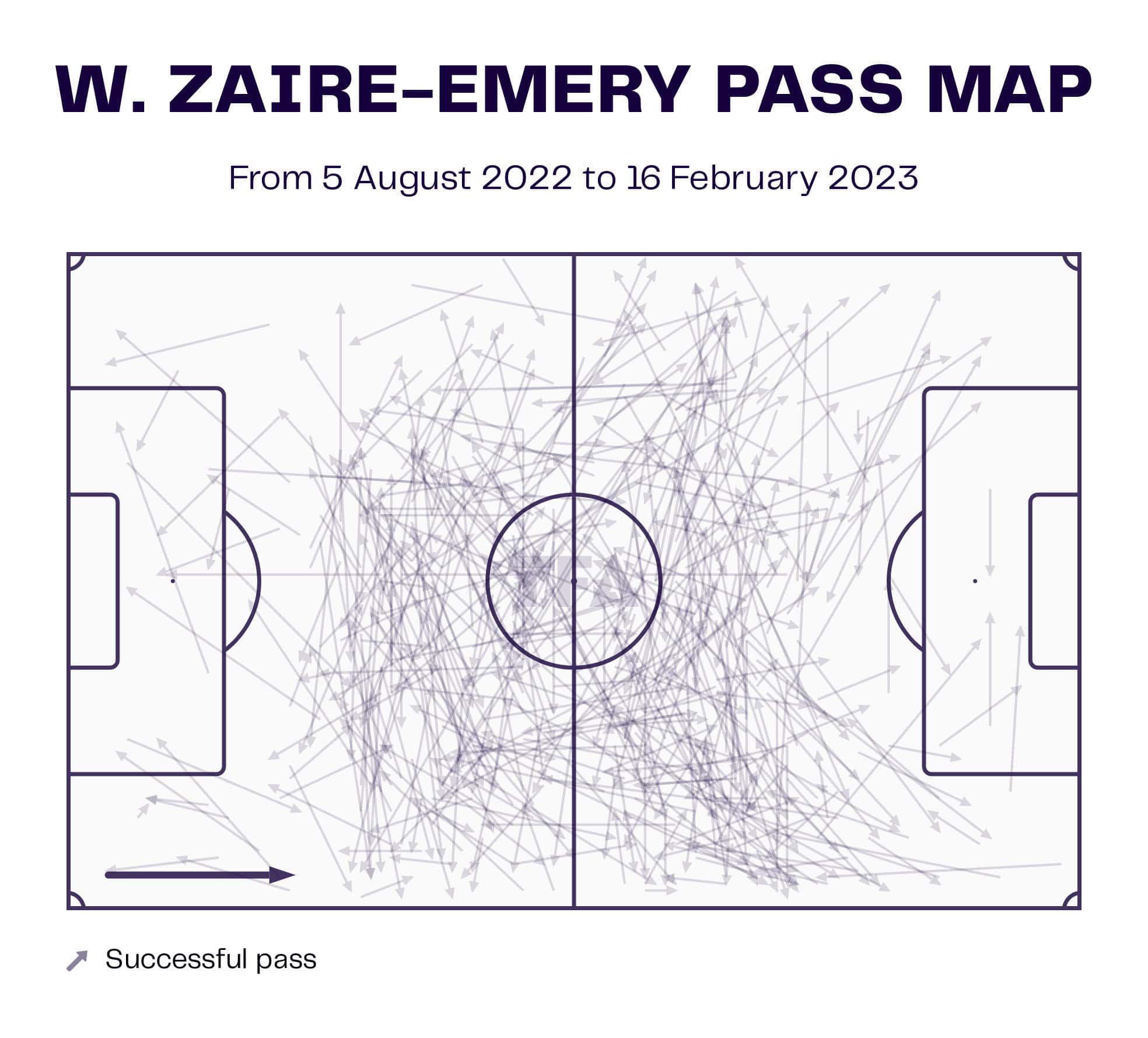
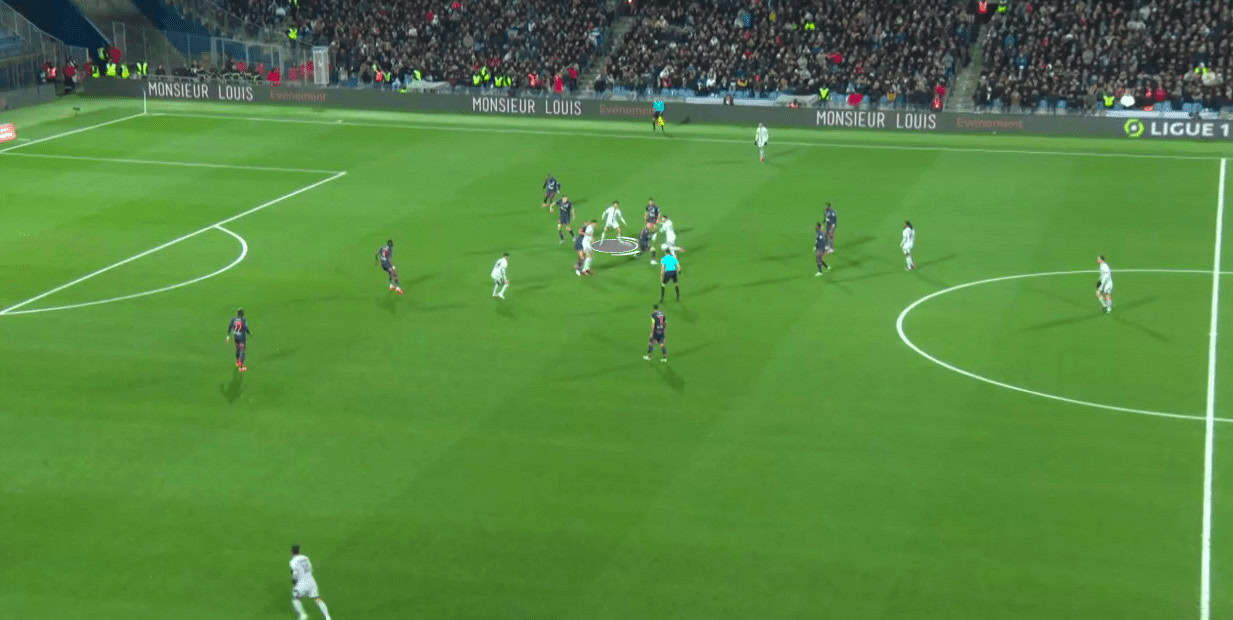
However, there are odd occasions where his desire to offer the short option causes overcrowding in one area of the pitch. In the image above, PSG have possession and Zaire-Emery’s first instinct is to move towards the ball. By doing this, he also takes a Montpellier defender with him. This leads to there being five defensive players surrounding three PSG attacking players. With no way out, Les Parisiens end up losing possession and the attacking opportunity is gone. Rather than looking to offer a short passing option, had Zaire-Emery made an off-the-ball movement into a wider area on the PSG right side, he would have likely created space for them to keep hold of the ball and pass through the lines.
The rumoured Arsenal target causes a multitude of problems for defenders with his constant runs in behind the defensive line, as demonstrated below in these images from PSG’s recent game against Montpellier. Having positioned himself towards the PSG right wing, he arches his run to ensure that he remains onside. Zaire-Emery is intelligent here as the closest PSG player to him is Lionel Messi. Knowing that the defenders are going to be heavily occupied in marking the Argentinian, he takes advantage of a lapse in concentration by the defence. His ability to inject a quick burst of pace allows him to break through the defensive line which then means Danilo can play a ball over the top which creates a 1v1 opportunity for Zaire-Emery against the goalkeeper.
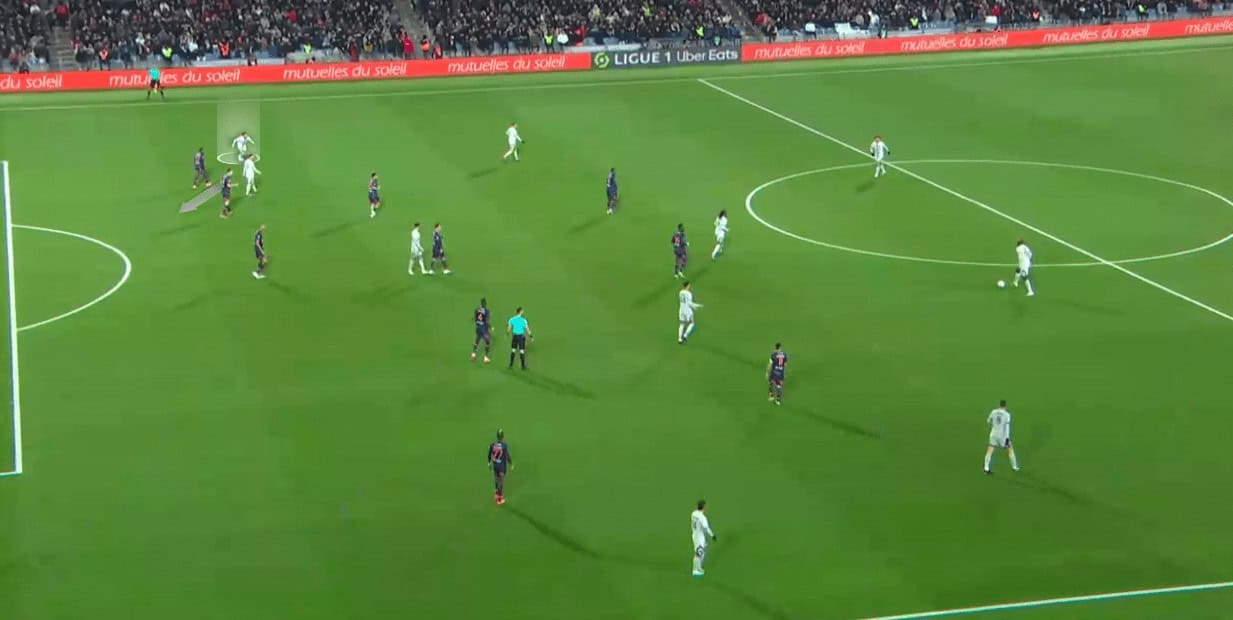
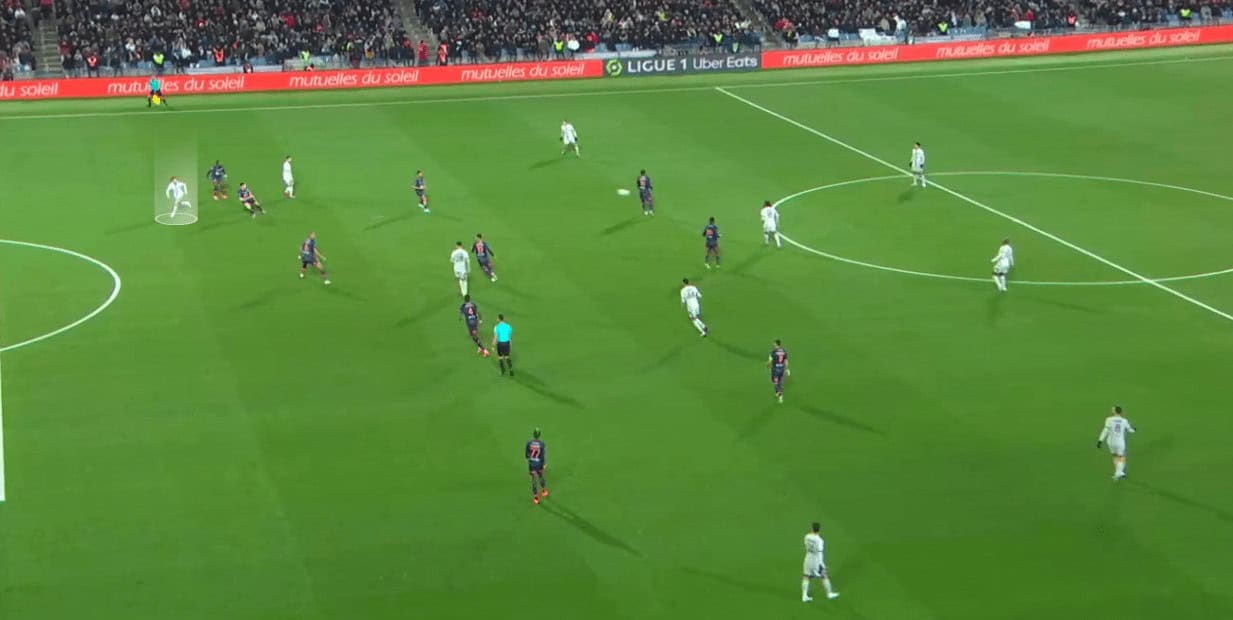
Quality in the defensive phase
As a central midfielder, Zaire-Emery is expected to contribute effectively when PSG are in the defensive phase of play. The data viz below shows all the defensive territory which he occupies and where his defensive actions take place on the pitch. As the viz shows, his average defensive line is just inside his own half, around the edge of the centre circle.
He has engaged in a number of defensive actions covering many areas of the pitch. The majority of them are between his own penalty area and the halfway line showing that Zaire-Emery is competent at shielding his defence. Averaging 1.55 interceptions per 90 so far this season shows that he is very often able to read the game effectively, meaning he can step in and intercept the opposition’s pass. This is an important skill as it means he is less likely to commit fouls and give away set-piece opportunities to the opposition.
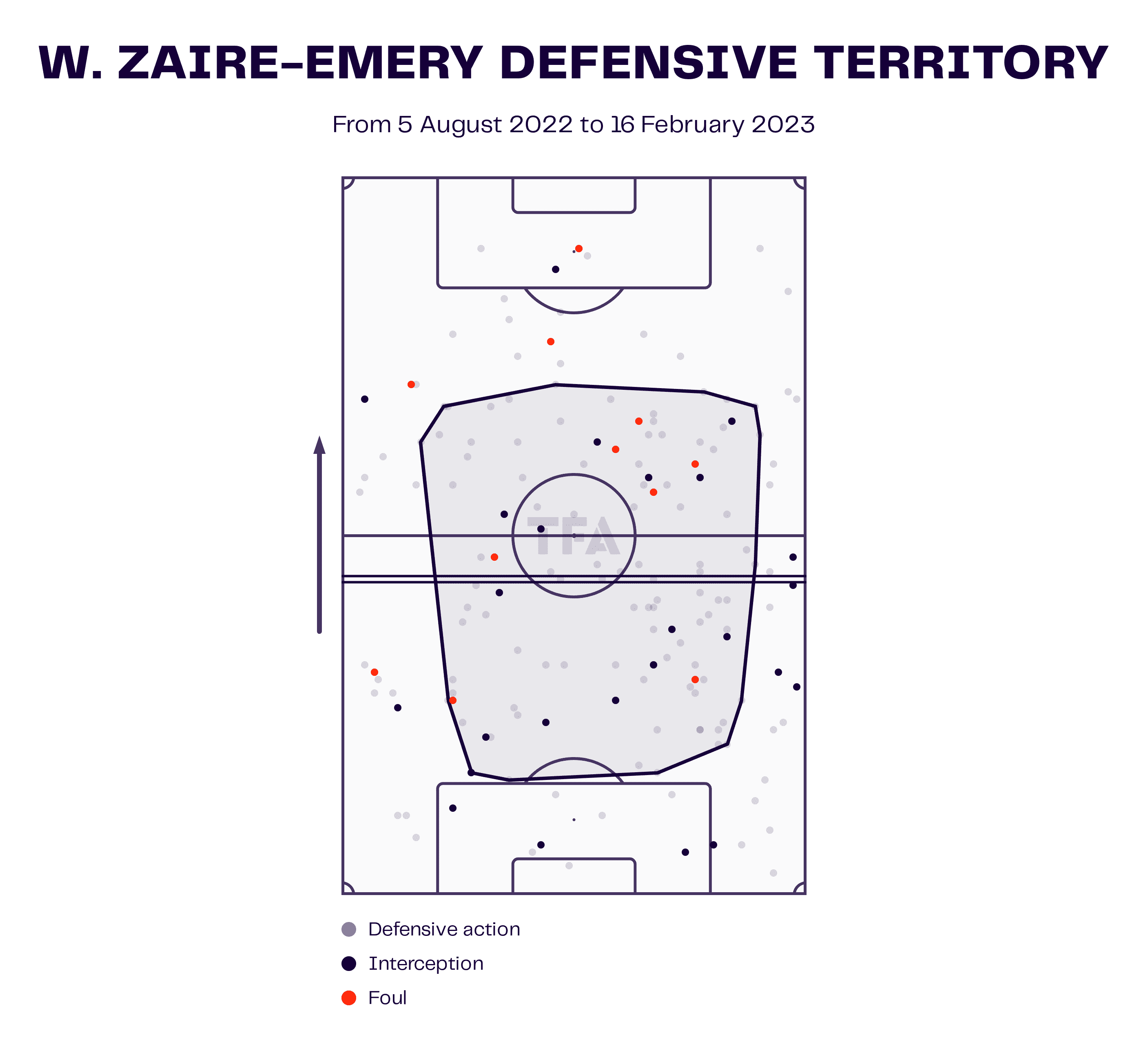
The tenacious midfielder does not shy away from engaging in duels. In the image below the Frenchman is occupying his average defensive position. As Montpellier looks to build an attack, Zaire-Emery quickly recognises that he needs to close down his opponent and is able to use his body position to ensure that there is no way for the Montpellier player to progress. He is able to battle for possession and eventually force a turnover. Zaire-Emery boasts a 63.9% success rating from his defensive duels so far this season, winning approximately 2.75 per game.
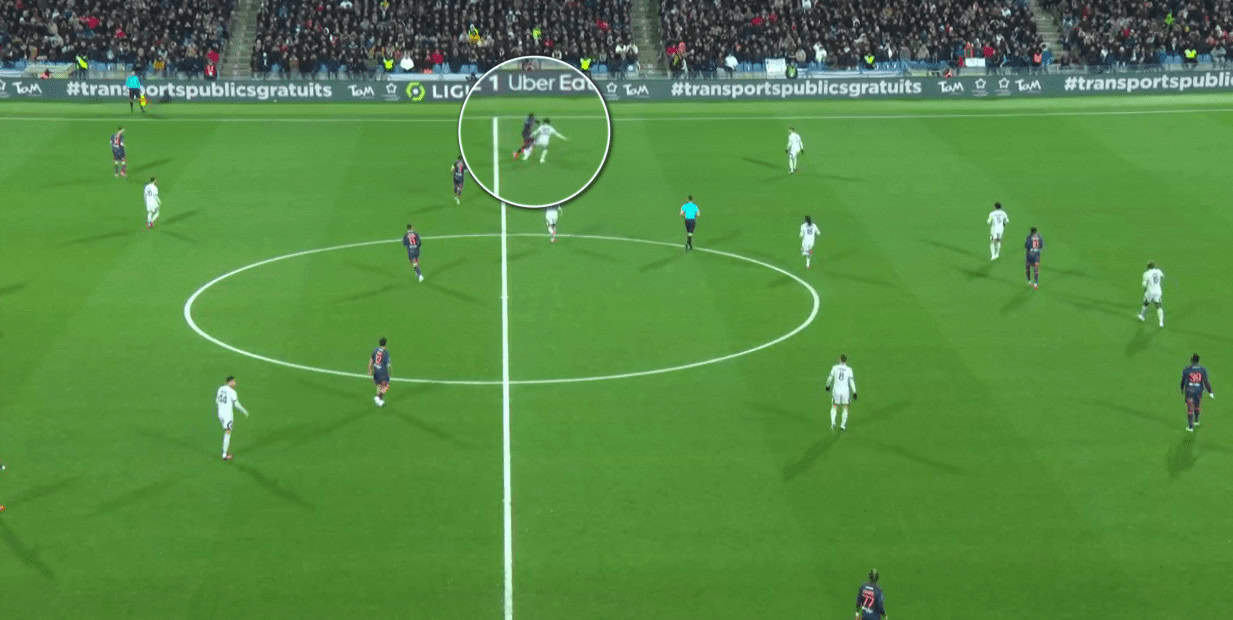
The images below are a good demonstration of Zaire-Emery getting his positioning right to ensure that he is able to make an interception. He is able to make a subtle movement to his right side and intercept the pass from the Rennes player.
In the sequence below, he makes the interception but a poor touch leads him to be unable to control the ball. He then engages in a duel with the Rennes player to try and regain possession. This is a good demonstration of his tenacious nature and willingness to use his strength which is exceptional for a player of his age. He is able to win the ball back and prevent Rennes from being able to build an attack.
Crucially, Zaire-Emery is able to make the challenge cleanly and does not give a foul away in his own half. He displays a good ability to read the game and knows when is the right time to stick a boot in to win the ball back.
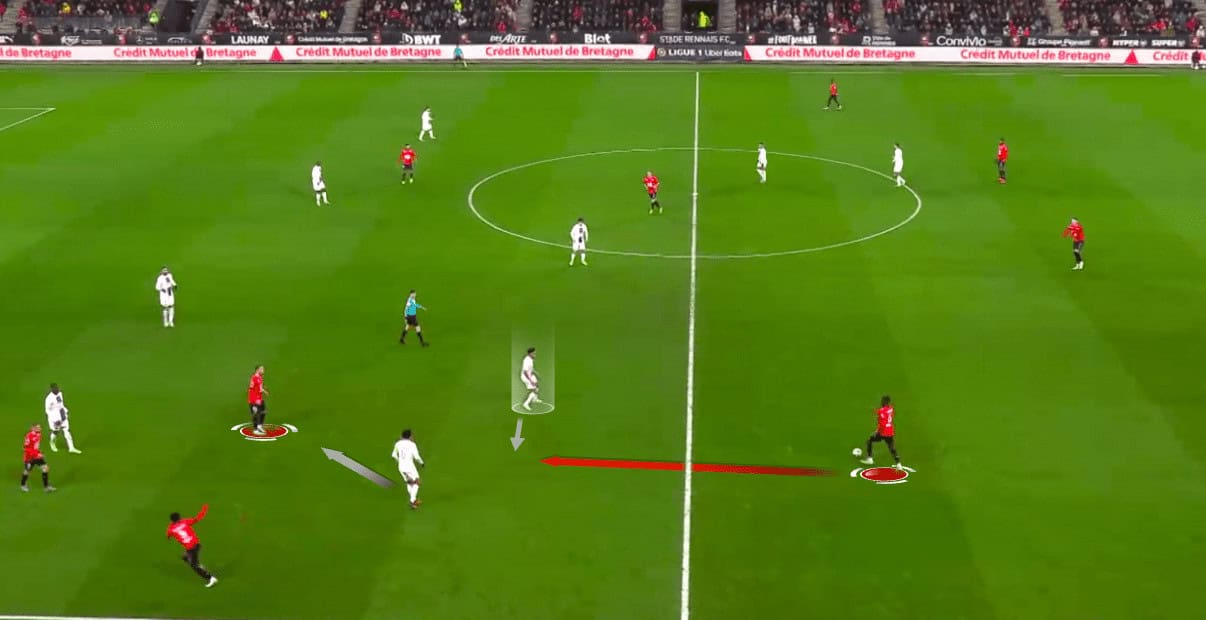
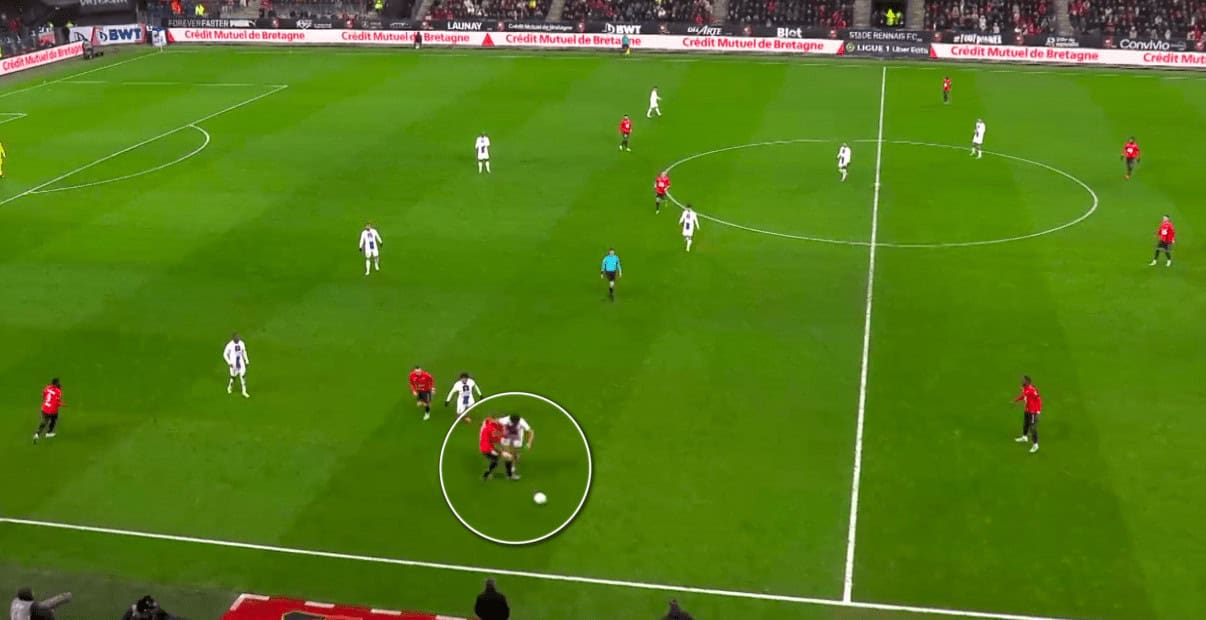
A little uncertainty
For all of Zaire-Emery’s many qualities in the defensive phase, it is the area where he demonstrates some weaknesses. He can be caught in two minds, unsure whether to engage in a press, cut off a passing lane, or stay and hold his position.
The images below, taken from the Monaco game, show the youngster displaying a degree of indecisiveness. He has scanned the players around him and is aware of their positions but as there are three passing lanes open for Monaco, he is unsure what to do. In this passage of play, he opts to do nothing. As a result, Monaco play around him and work their way into the PSG penalty area and carve out a goalscoring opportunity, forcing Donnarumma into a save.
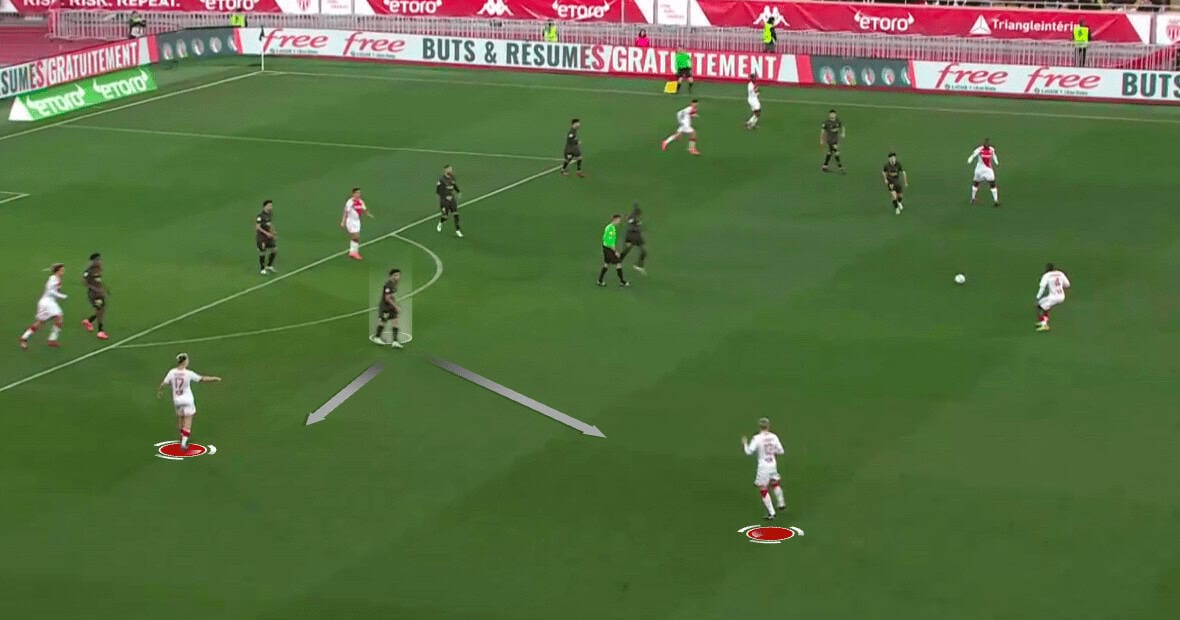
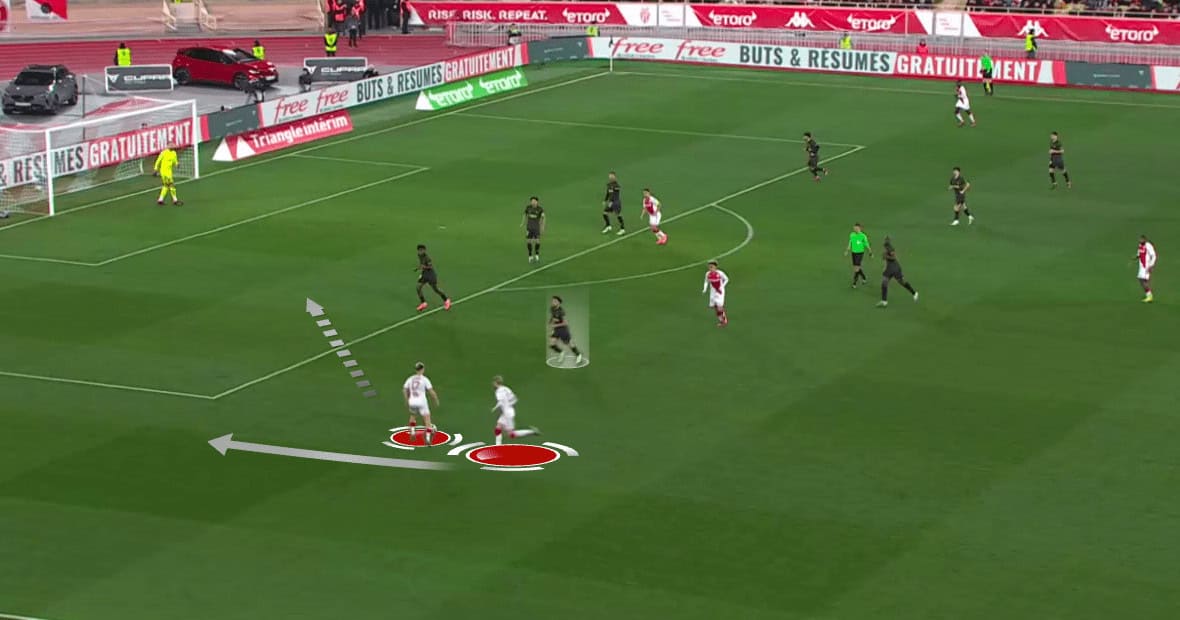
Conclusion
Overall, as this analysis has shown, Warren Zaire-Emery is an incredibly talented young player. It is highly likely that he will go on to cement a place in Paris Saint-Germain’s starting lineup for years to come. At only 16 years old he presents the confidence and ability of someone well beyond his years. Of course, there are areas to improve within his game but he has time on his side. Should he not be able to nail down a place in the PSG team, he will not be short of suitors with Premier League club Arsenal already keen admirers.
It is likely that Zaire-Emery will benefit hugely from Campos’ youth development policy. As he continues to adapt to Galtier’s tactics, he will develop as a player and the PSG fans will be able to enjoy one of their own becoming part of the team of superstars.





Comments